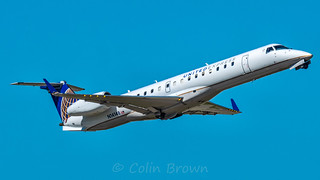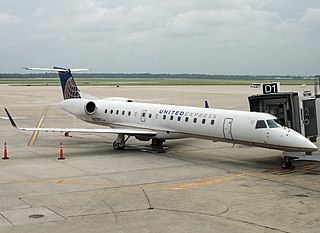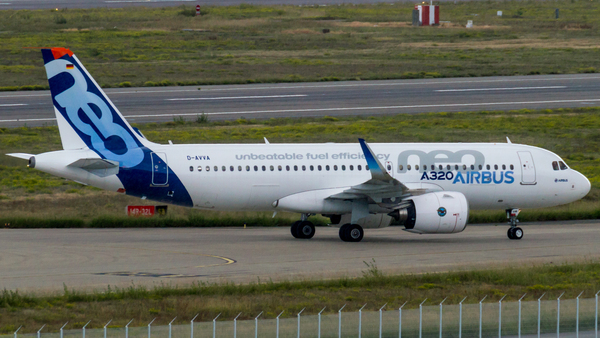Commutair DH8B near Hartford on Jun 5th 2015, fire in cockpit
Last Update: January 13, 2016 / 14:21:37 GMT/Zulu time
Incident Facts
Date of incident
Jun 5, 2015
Classification
Incident
Airline
Commutair
Flight number
C5-4776
Departure
Newark, United States
Destination
Hartford, United States
Aircraft Registration
N363PH
Aircraft Type
De Havilland DHC-8-200 Dash 8
ICAO Type Designator
DH8B
Local Police reported the crew put out a small fire in the cockpit using a fire extinguisher.
The airline confirmed a fire in the cockpit about 5 minutes prior to landing.
The NTSB have opened an investigation.
On Jun 9th 2015 the FAA reported the crew reported a fire in the cockpit, after landing the occupants left the aircraft through main and emergency doors.
On Jun 17th 2015 the NTSB confirmed in a first preliminary note that the crew encountered an inflight cockpit fire, donned their oxygen masks and continued for a safe landing, there were no injuries, the aircraft sustained minor damage. The occurrence was rated an incident and is being investigated, investigators have travelled on site.
On Dec 25th 2015 the NTSB updated the preliminary information stating, that the crew observed a pop sound followed by arcing from the right hand windshield terminal block developing into a fire. The crew donned their oxygen masks, declared emergency, the first officer discharged a fire extinguisher, and the crew performed a successful emergency landing. The crew reported there were no caution or warning indications, none of the circuit breakers popped. The right hand windshield sustained damage in the area of the terminal block, the inner ply was fractured.
The NTSB added that examination of the faulty windshield revealed evidence of moisture ingress, there was also evidence of repair work done to the moisture seal along the entire upper and aft edges. The windshield had been last inspected 3,582 flights hour prior to the occurrence with inspections required every C-check (10,000 hours) and the heater block every 12,000 hours.
On Jan 13th 2016 the NTSB released their final report concluding the probable cause of the incident was:
The arcing failure of the windshield heat power wire on the right windshield due to unknown reasons. Contributing to the severity of the fire was the lack of training or guidance provided to the crew for selecting the windshield heat to off that would cut power to the circuit.
The NTSB added, that after landing the windshield heat selector switch was found in the normal position, selecting the switch to the off position would have cut power to the windshield heating system. The crew had undertaken at least two attempts to extinguish the fire with no success, the fire eventually extinguished itself. The NTSB stated: "There is no training or guidance provided to the crew for windshield arcing, smoke, fire, or overheat events."
The NTSB stated: "Examination of the windshield revealed that it had been installed on the airplane since manufacture more than 17 years prior to the incident, which far exceeded the average life of 8.2 years reported by the windshield manufacturer. The windshield exhibited typical signs of aging with ample evidence of moisture ingression into the laminate around the edges of the windshield. The aging discrepancies noted were within the published limits and did not contribute to the failure. The fire damage was concentrated in an area between the upper edge of the terminal block and the lower edge of the windshield gasket where the power wire was routed. The power wire was melted through in this area but remained soldered to the bottom of the terminal block indicating an arcing failure of the power wire. The damage and melting precluded determining if there was any pre-existing damage to the power wire prior to the incident. The arcing of the power wire produced enough localized heating to melt the glass and cause the fracture of the inner glass pane."
Aircraft Registration Data
Incident Facts
Date of incident
Jun 5, 2015
Classification
Incident
Airline
Commutair
Flight number
C5-4776
Departure
Newark, United States
Destination
Hartford, United States
Aircraft Registration
N363PH
Aircraft Type
De Havilland DHC-8-200 Dash 8
ICAO Type Designator
DH8B
This article is published under license from Avherald.com. © of text by Avherald.com.
Article source
You can read 2 more free articles without a subscription.
Subscribe now and continue reading without any limits!
Read unlimited articles and receive our daily update briefing. Gain better insights into what is happening in commercial aviation safety.
Send tip
Support AeroInside by sending a small tip amount.
Related articles
Commutair DH8B near Canandaigua on Jun 21st 2015, smoke in cockpit
A Commutair de Havilland Dash 8-200 on behalf of United, registration N363PH performing flight UA-4770 from Newark,NJ to Rochester,NY (USA) with 37…
Commut E145 at Amarillo on Jan 29th 2025, engine shut down in flight
A CommutAir Embraer ERJ-145 on behalf of United, registration N27190 performing flight UA-4816 from Amarillo,TX to Houston Intercontinental,TX (USA),…
Commut E145 at Houston on Dec 8th 2024, fumes in cockpit
A CommutAir Embraer ERJ-145 on behalf of United, registration N11164 performing flight UA-4878 from Mobile,AL to Houston Intercontinental,TX (USA),…
Commut E145 near Monroe on Dec 2nd 2024, smoke in cockpit
A CommutAir Embraer ERJ-145 on behalf of United, registration N14148 performing flight UA-4830 from Little Rock,AR to Houston Intercontinental,TX…
Commut E145 at Washington on Oct 30th 2024, interior panel fell on passenger
A Commutair Embraer ERJ-145 on behalf of United, registration N14148 performing flight UA-4305 from Washington Dulles,DC to Huntsville,AL (USA), was…
Commut E145 at Lake Charles on Jul 22nd 2023, runway excursion on landing
A Commutair Embraer ERJ-145 on behalf of United, registration N21197 performing flight UA-4293 from Houston Intercontinental,TX to Lake Charles,LA…
Newest articles
UPS MD11 at Louisville on Nov 4th 2025, burst into flames on takeoff
A UPS United Parcel Service McDonnell Douglas MD-11, registration N259UP performing flight 5X-2976 from Louisville,KY to Honolulu,HI (USA) with 3…
India A20N near Bhopal on Nov 3rd 2025, cargo smoke indication
An Air India Airbus A320-200N, registration VT-EXO performing flight AI-2487 from Delhi to Bangalore (India) with 172 people on board, was enroute at…
Subscribe today
Are you researching aviation incidents? Get access to AeroInside Insights, unlimited read access and receive the daily newsletter.
Pick your plan and subscribePartner

ELITE Simulation Solutions is a leading global provider of Flight Simulation Training Devices, IFR training software as well as flight controls and related services. Find out more.
SafetyScan Pro provides streamlined access to thousands of aviation accident reports. Tailored for your safety management efforts. Book your demo today
AeroInside Blog
Popular aircraft
Airbus A320Boeing 737-800
Boeing 737-800 MAX
Popular airlines
American AirlinesUnited
Delta
Air Canada
Lufthansa
British Airways




